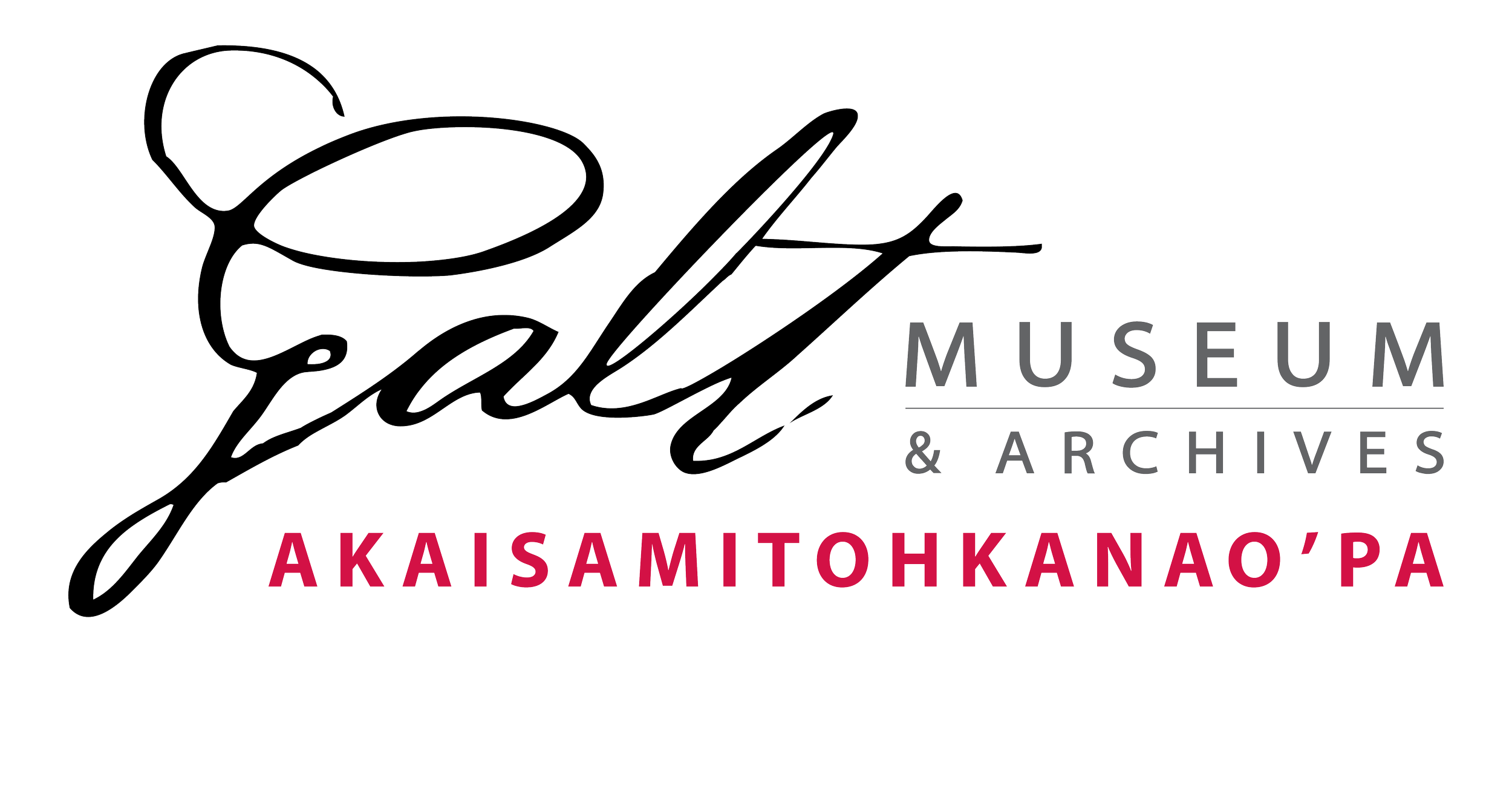People on the Wall Audio

Introduction
As you enter Discovery Hall, go to the left and past the buffalo (seriously) and have a look up on the wall behind the windmill. You will notice pictures of people hanging on the wall. Who are these people and why are they there?
In years past, history was taught as if there was only one version. That isn’t true. Every cultural group, socio-economic group, gender and even person has a different perspective of history. When creating Discovery Hall, we wanted people to understand that there are many stories, all equally important and all of which combined have created the identity of the communities and peoples of southwestern Alberta. The people here presented, and many others for whom we didn’t have room, all have important stories to tell.
Upon his death, William Fairfield was declared “Southern Alberta’s best known pioneer and moving spirit in agriculture trail blazing,” a tribute he greatly deserved.
Father Van Tighem held the first mass in Lethbridge in 1884 when he was asked to come from Fort Macleod to administer the last sacraments to Michael Sheran, brother of Nicholas Sheran. He was later officially appointed the first Pastor of St. Patrick's Church in Lethbridge.
William Buchanan was a newspaperman and politician. In 1905 he bought a half interest in the Lethbridge Weekly Herald.
Alexander Tilloch Galt was born in London in 1817, the son of John Galt, poet and land developer.
Joe Healy, a member of the Kainai, was adopted by Johnny Healy, who along with A.B. Hamilton started Fort Whoop-Up.
Louise McKinney was the first woman elected to a government in Canada, the first woman elected to a legislature in the British Empire.
Lethbridge was actually named for William Lethbridge, the first president and largest investor in the North Western Coal and Navigation Company.
From 1870 to 1900, he was head chief of the Kainai, also known as the Blood tribe, part of the Blackfoot Nation.
Kate Andrews is remembered through Kate Andrews High School in Coaldale and the Andrews Building at Lethbridge College. So who was Kate Andrews?
The Fighting Parson! Charles McKillop was the perfect minister for the rough, tough coalmining and frontier town that Lethbridge was in the early days. It is said that if he couldn’t convince someone with the power of his words, he convinced them with his fists!
Edith Coe was born in England and worked for a while as a governess in France. In the 1880s, she followed her parents out to the Lethbridge area. She started a one-room school in a miners’ cottage in 1885, teaching there for about a year.
Born in Lethbridge, Ted Hagell showed a talent for drawing and a love of the prairie landscape and the pioneer life.
Jim Shot Both Sides was the last Hereditary Chief of the Blood Reserve as well as the first elected chief of the Blood Reserve.
Nicholas Sheran, born in New York of Irish parents, was the first commercial coal miner in Alberta and, some speculate, in all of western Canada.
Born in Hardieville (now part of Lethbridge) in 1914, Irene McCaugherty was a painter, poet, writer, and photographer.
One of the most colourful figures in early Lethbridge was Dr. Frank Hamilton Mewburn, who arrived in Lethbridge in December 1885 and accepted a post as Medical Officer with the North Western Coal & Navigation Company.
Mildred Dobbs was requested to not attend church. What kind of woman must she have been to have such a request made? The very best!
A lover and supporter of the arts, and an accomplished actor, Joan Waterfield was involved with southern Alberta theatre for many years.
Female entrepreneurs in Lethbridge in the 1930s were rare enough. Ella Emma Dunn was a black, female entrepreneur in Lethbridge in the 1930s
Elliott Galt, the “Father of Lethbridge”, was sent into the North West Territories in 1873 as an assistant Indian Commissioner.
In 1919, Emily Murphy, Henrietta Muir Edwards, Louise McKinney, Irene Parlby and Nellie McClung fought for the recognition of women as persons under the British North America Act. Known as the Famous Five, all of these women were from Alberta. Two of them, Henrietta Muir Edwards and Louise McKinney, were from southern Alberta.
Houk spent time in the navy in the American Civil War, served as both a sheriff and deputy sheriff in Montana, rode for the Pony Express, drove stage for Wells Fargo Express and reportedly met Mark Twain on a steamer, spending hours in conversation with him.
Jerry Potts, also known as Bear Child, was one of the most renowned guides and interpreters who ever served with the Northwest Mounted Police.
Thomas Blakiston traveled the world pursuing adventure and his scientific interests. In 1858 he travelled west with the Palliser Expedition as the expedition explored and mapped the western plains.
Despite head taxes and discrimination, some early Chinese immigrants managed to build businesses. Way Leong was a Chinese entrepreneur who, along with his wife Florence Leong, started the Bow On Tong in 1928.
Were you an Ann Campbell singer? Ann Campbell is one of the best known, and best loved, choir conductors to ever work in southern Alberta.



























Along with “Kootenai” Brown of Waterton Park fame, William Samual Lee was one of the first Caucasian residents in this part of the country.